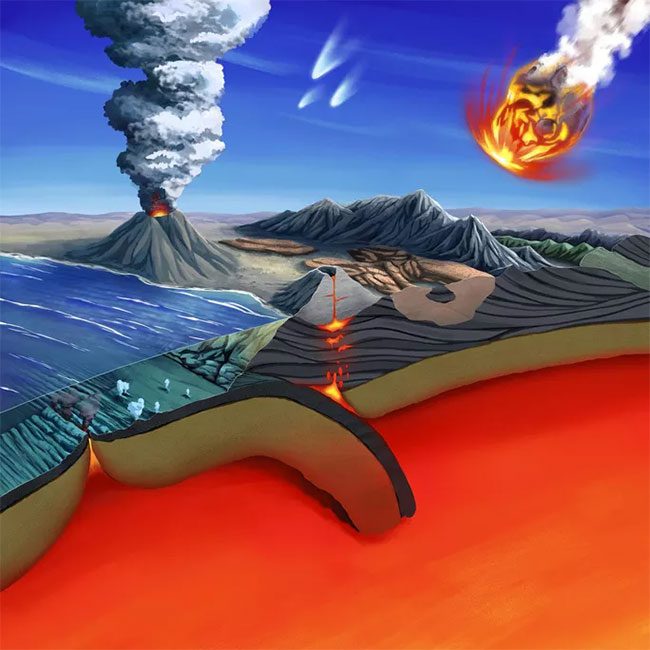If a rocky planet shows sustainable signs of methane in its atmosphere, it must be a place where extraterrestrial life exists, American scientists assert.
A new study, recently published in the Proceedings of the National Academy of Sciences, confirms that abiotic methane sources will never be sufficient to maintain a stable level of methane in the atmosphere of a rocky planet like Earth.
To reach this conclusion, the research team led by astrophysicist Maggie Thompson from the University of California, Santa Cruz, examined various abiotic methane sources and assessed their potential to sustain a methane-rich atmosphere: volcanoes, hydrothermal systems, subduction zones, and impacts from comets and asteroids…

Abiotic methane sources – (Photo: Elena Hartley)
According to SciTech Daily, the results indicate that while natural phenomena can instantaneously release a sufficient amount of methane, it is too easily destroyed by photochemical processes, hence it cannot be maintained for long.
For a methane-rich atmosphere, a rocky planet similar to Earth would require a more stable and abundant supply: the biological activity of living organisms.
Moreover, an atmosphere of a habitable world would have a significantly higher methane ratio in the air compared to an atmosphere that has been artificially pumped with methane from abiotic events. This is because abiotic events not only produce methane; for example, a volcanic eruption can simultaneously fill the space with both methane and deadly carbon monoxide.
In a living world, which also has oxygen, carbon monoxide would be partially addressed by the living organisms themselves and partially oxidized to become carbon dioxide.
Thus, the authors suggest that an extraterrestrial atmosphere suitable for life must contain methane, and it would be even more certain if there are signs of carbon dioxide, a higher concentration of methane compared to carbon monoxide, and indications of water.
The reason scientists are focusing on methane for research is that it will serve as a biomarker that the James Webb Space Telescope (recently launched by NASA) can easily detect; while it will be much more challenging to find signs of oxygen.
Therefore, methane will be an effective and attractive “guiding star” for future missions searching for extraterrestrial life.
By the end of this year, the James Webb is expected to begin its mission to observe the atmospheres of Earth-like worlds in the hunt for extraterrestrial life.


















































